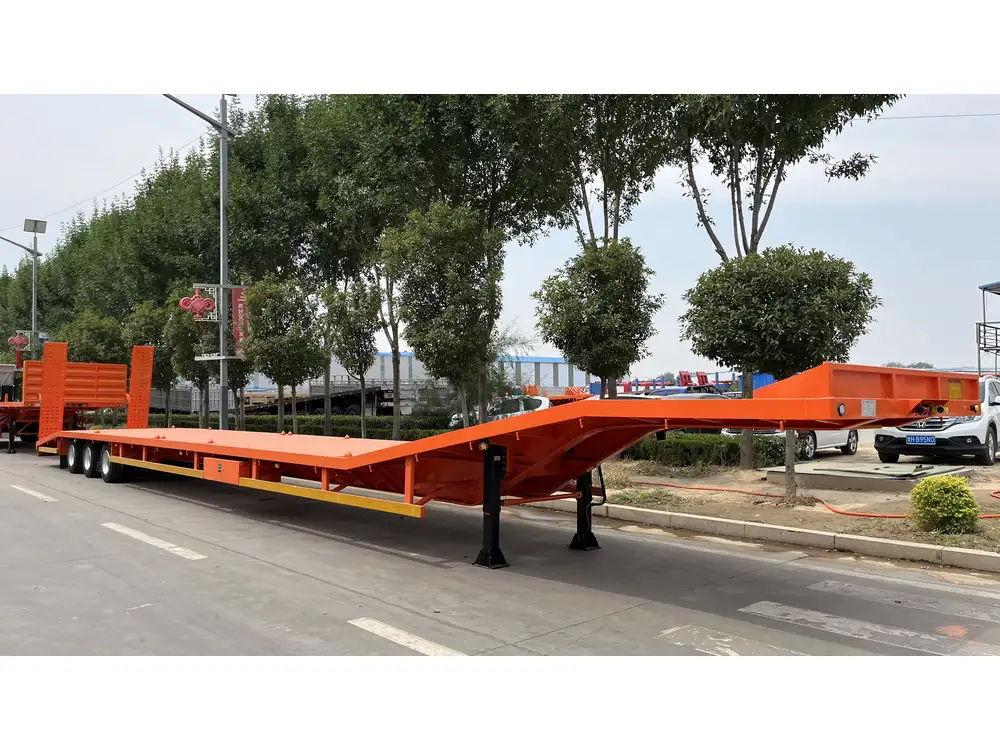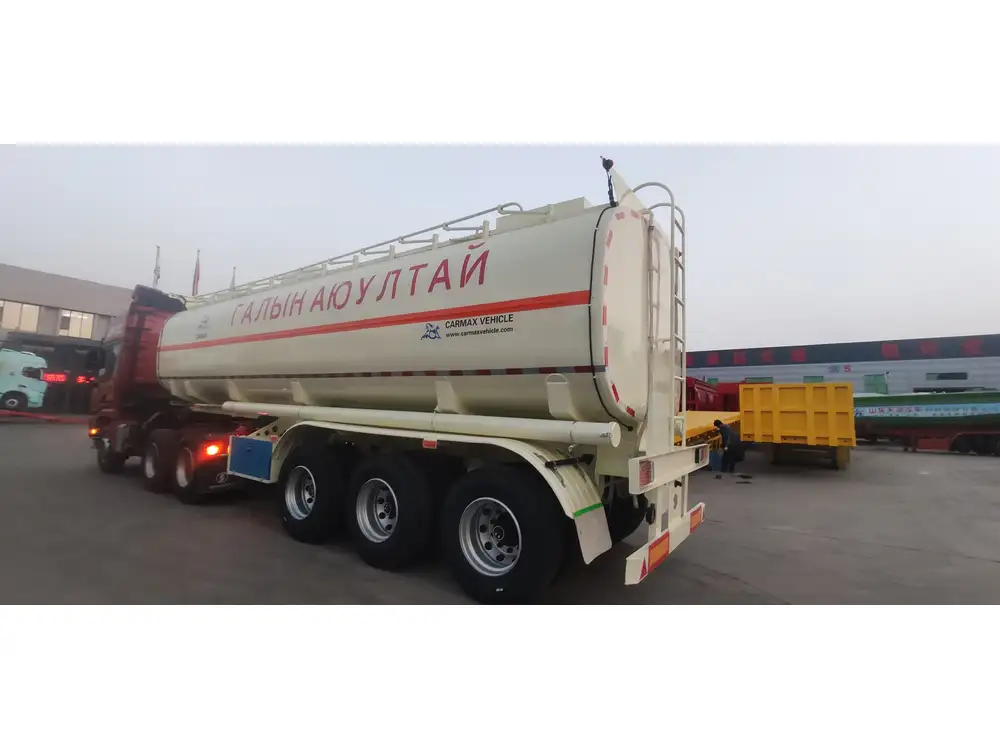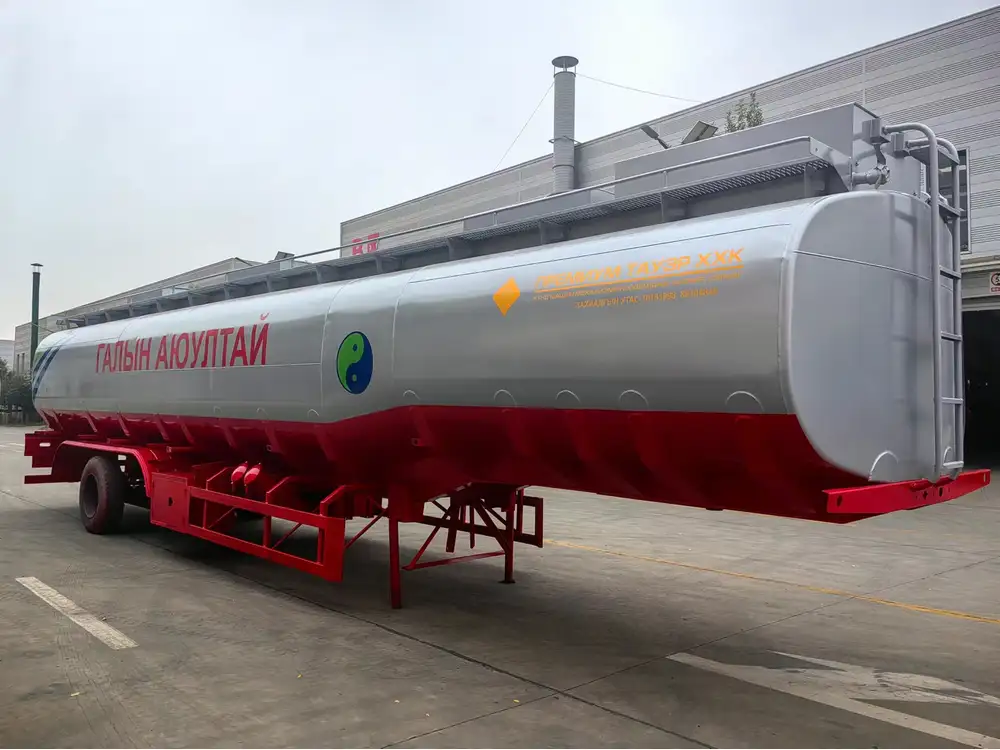Introduction to Semi-Trailer Design
In the intricate world of semi-trailer construction, every component, however small, plays a pivotal role in ensuring safety, compliance, and functionality. Among these components is the back bumper, a critical element that often raises questions among transportation professionals and enthusiasts alike. What exactly is the back bumper on a semi-trailer called? Understanding its designation, design, and significance can enhance your knowledge of trailer operations and improve safety measures on the road.
What is the Back Bumper on a Semi-Trailer Called?
The back bumper of a semi-trailer is commonly referred to as the “rear impact guard,” “safety bumper,” or “rear bumper.” These terms are frequently used interchangeably, but they all describe a designated safety feature designed to absorb shock and protect both the trailer and other vehicles in case of a collision.
| Term | Description |
|---|---|
| Rear Impact Guard | The technical name emphasizing safety standards adherence. |
| Safety Bumper | Highlights the protective function of the component. |
| Rear Bumper | The general term used in both mechanical and layman contexts. |

Importance of the Rear Impact Guard
The rear impact guard serves multiple essential purposes in the overall safety architecture of a semi-trailer. This bumper is engineered not just for aesthetics, but primarily to enhance safety and compliance with transport regulations.
Key Functions of the Rear Impact Guard:
Collision Mitigation: The rear bumper absorbs energy during low-speed collisions, significantly reducing damage to the semi-trailer and potentially minimizing injury to drivers in smaller vehicles.
Compliance with DOT Regulations: In the United States, the Department of Transportation (DOT) mandates specific standards for rear impact guards. Ensuring that your semi-trailer is equipped with an appropriate bumper keeps you compliant and helps in avoiding hefty fines.
Protecting Cargo: A properly designed rear bumper also safeguards the cargo loaded onto the trailer, reducing the risk of product damage during transit caused by unexpected impacts.
Visibility and Identification: Many rear bumpers are designed with reflective materials or lights to enhance visibility, particularly during low-light conditions. This feature is vital for preventing accidents, especially on busy highways.
Key Components of a Semi-Trailer’s Rear Bumper
Understanding the architecture of the rear bumper can provide deeper insights into how it performs its protective role. Below are the main components typically found in a rear impact guard:
| Component | Description |
|---|---|
| Main Beam | The primary structural element, providing strength and rigidity. Typically made of steel or reinforced aluminum. |
| End Plates | Attached to either end of the main beam to dissipate incoming collision energy. |
| Cross Member | Positioned between the main beams, providing stability and reinforcement. |
| Mounting Brackets | Secure the bumper to the semi-trailer chassis, ensuring it stays in place during transit. |
| Reflective Tape | Enhances visibility during nighttime or low-visibility conditions, crucial for safety on public roads. |

Material and Design Considerations
The choice of materials and design standards for rear impact guards is driven by several factors, including weight, durability, and compliance with safety regulations. Common materials used in constructing these bumpers include:
- Steel: Offers exceptional strength and impact resistance, making it the most common choice for heavy-duty trailers.
- Aluminum: A lightweight alternative that still provides considerable strength but might compromise on impact resistance when compared to steel.
- Polymer Composites: Emerging materials that offer innovative benefits such as resistance to corrosion and decreased weight, although they may not be as widely used yet.
Structural Integrity and Safety Ratings
Reinforced by rigorous testing protocols and safety standards, the rear impact guards must endure considerable impact forces without structural failure. Here, we delve into key metrics and standards involved in assessing rear bumper integrity.
FMVSS 223: Federally Mandated Standard that establishes safety performance requirements for rear impact guards, focusing on design, construction, and installation.
Load Testing: Rear impact guards undergo extensive load testing to simulate various collision scenarios. This testing is crucial to ascertain that the guard can withstand the impact loads that might occur during highway travel.
Common Misconceptions Surrounding Semi-Trailer Bumpers

1. Electric or Hydraulic Components:
Many may believe that semi-trailer bumpers include hydraulic features for assisted lifting or lowering. In actuality, rear impact guards are purely mechanical and do not have these functions.
2. Solely Cosmetic Equipment:
It’s a common fallacy that the rear bumper is merely for aesthetics. However, its design and functionality are strictly implemented for safety and regulatory compliance.
3. One-Size-Fits-All:
While some components are interchangeable, the specifications for rear impact guards can vary widely based on vehicle type, size, and usage applications.

Maintenance and Inspection of the Rear Impact Guard
Regular maintenance is paramount in ensuring that the rear impact guard remains functional and compliant. Key steps include:
Routine Checks Include:
- Visual Inspection: Look for signs of damage, rust, or deformation.
- Reflective Material Assessment: Ensure reflective tape is intact and not faded to guarantee visibility.
- Secured Mounting: Verify that all mounting brackets and bolts are securely fastened to avoid any detachment.
| Maintenance Task | Frequency | Notes |
|---|---|---|
| Visual Inspection | Monthly | Check for surface damage and cracks. |
| Reflective Material Check | Monthly | Make sure all reflective elements are clear and intact. |
| Hardware Tightness Check | Bi-Annually | Ensure all mounting brackets and screws are tight. |
The Future of Semi-Trailer Rear Bumpers
The advent of advanced materials science offers a glimpse into the future of trailer safety features. Innovations such as:
Smart Materials: These dynamically change properties based on external conditions, potentially enhancing impact absorption capabilities.
Adaptive Safety Systems: Future systems could include integrated sensors that engage additional safety measures when a collision is imminent, thereby improving reaction times and safety outcomes.

Conclusion: The Essential Role of the Rear Impact Guard
In summary, the rear impact guard of a semi-trailer, also known as the back bumper, is much more than a simple structural component—it embodies a comprehensive commitment to safety, compliance, and performance. For manufacturers and operators in the trucking industry, understanding the specifications, maintenance, and innovations surrounding this essential piece of equipment can yield benefits that extend beyond mere regulatory compliance.
As the regulatory landscape continues to tighten around transportation safety, both existing operators and new entrants into the industry must prioritize understanding and implementing robust safety measures like the rear impact guard. Ultimately, prioritizing these safety features can lead to improved operational efficiency, cost savings from reduced accident impacts, and, most importantly, the safety of all travelers on the road.
By focusing on these aspects, you not only ensure compliance but also foster a culture of safety and responsibility in the transportation sector. So, whether you are a fleet manager, a manufacturer, or an operator, keeping abreast of developments in rear impact guard technology and regulations is indispensable for impactful and safe transport operations.



